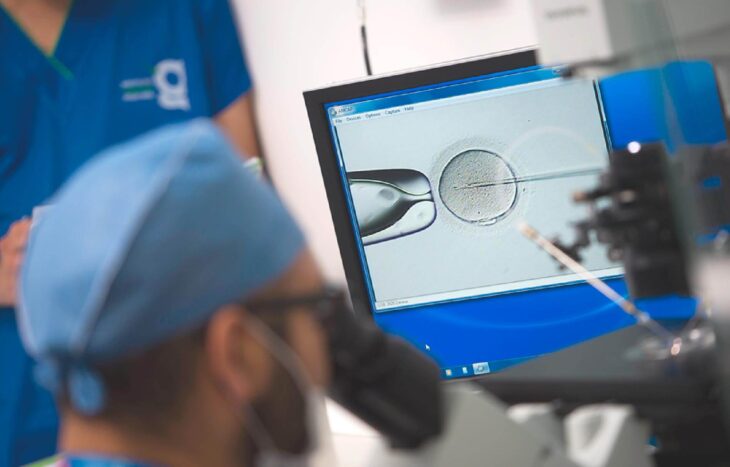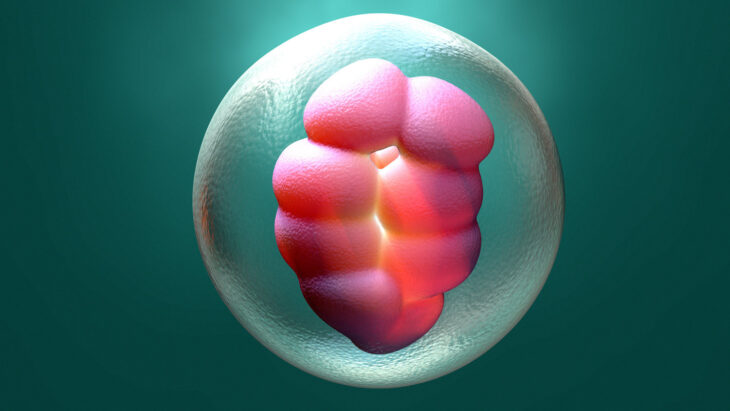Coping with the stress of infertility is like no other challenge that a couple will face. The cause of infertility is often difficult to determine. Even when the cause is known, the road forward can be confusing and complicated. Just talking about the problem can be daunting.
For couples who courageously wrestle with the issue, in vitro fertilization (IVF) is often presented as a path forward. If you are exploring IVF, you have most likely encountered a wide range of information on the pros and cons. Undoubtedly, some of what you have learned is more myth than truth.
Ekin Ozlen, CEO of the high-science beauty brand KERACELL, knows the wide range of emotions that accompany the IVF journey. Speaking from her experience, she offers the following insights on the most common IVF myths.

Source: womanlog.com
Contents
- Myth 1 – IVF causes early menopause.
- Myth 2 – IVF causes cancer.
- Myth 3 – IVF leads to multiple pregnancies.
- Myth 4 – IVF is the only option for those experiencing infertility.
- Myth 5 – IVF is prohibitively expensive and all the expenses are “out of pocket.”
- Myth 6 – The doctor does all the hard work when it comes to IVF.
Myth 1 – IVF causes early menopause.
This persistent rumor springs from a misunderstanding of the process used in IVF to stimulate egg production. The belief is that IVF stimulates the release of more eggs than those that are involved in a normal ovulation cycle. As this process is repeated, eggs are “used up” more quickly than normal, leading to early menopause.
The reality is that IVF does not involve more eggs. Normal ovulation involves many eggs, with only one growing to maturity and being released from the follicles in the ovary. IVF uses fertility drugs to prompt the maturation and release of multiple eggs from follicles in a process known as “superovulation.”
“A key part of the IVF process is encouraging the production of healthy eggs,” explains Ekin. “The hormones that you take leading up to the egg retrieval procedure allow the doctors to work with eggs that would normally be lost during the menstrual cycle. It doesn’t deplete a woman’s natural egg supply.”
Myth 2 – IVF causes cancer.
This myth grew from the misunderstanding of medical research showing a link between infertility and cancer. However, rather than indicate that IVF is causing cancer in women, it shows that the same conditions that lead to infertility can also lead to cancer. Studies conducted as recently as 2019 have found no link between infertility drugs and increased risk of cancer.
“My physician correctly assured me that there are no links between IVF and cancer,” says Ekin. “The medications used to stimulate egg production were prompting my body to do what it would naturally do, just to do it on a higher scale.”

Source: integrisok.com
Myth 3 – IVF leads to multiple pregnancies.
While IVF will often involve the harvesting of multiple eggs, it does not require the transfer of multiple eggs to the uterus. A doctor’s recommendations on how many eggs to transfer will often be based on a woman’s age and other factors, but the decision ultimately belongs to the patient.
“I had friends who chose to transfer more than one embryo per cycle to increase the chance of pregnancy,” says Ekin. “I only transferred one.”
While increasing the number of transfers does increase the chance of pregnancy slightly, it also increases the risk of complications that come with multiple pregnancies.
Myth 4 – IVF is the only option for those experiencing infertility.
While IVF is the most popular treatment for infertility, it is not the only assisted reproductive technology (ART) available. Others include gamete intrafallopian transfer (GIFT), zygote intrafallopian transfer (ZIFT), and frozen embryo transfer (FET). In addition, there are a wide range of non-ART therapies, such as hormone treatments, fertility drugs, and corrective surgeries that can address infertility.
“It is imperative that both partners take the time to consult with an infertility specialist before choosing IVF or any of the other options,” advises Ekin. “Because there are so many possible causes, every couple’s infertility journey will be unique.”

Source: ingenes.com
Myth 5 – IVF is prohibitively expensive and all the expenses are “out of pocket.”
While IVF is expensive, often costing between $10,000 and $15,000 per cycle, some insurance plans provide a degree of coverage. RESOLVE: The National Infertility Association is a non-profit advocacy group that provides support to those coping with infertility. It reports that as of April 2024, 19 states have passed insurance coverage laws, with 13 of those including IVF coverage.
In addition to the possibility of insurance coverage, many companies have begun to include fertility benefits to employees as part of their Diversity, Equity, and Inclusion (DEI) programs. Bank of America, for example, offers unlimited IVF coverage to employees who have been diagnosed with infertility.
“The financial burden is intense,” says Ekin. “You really want to make sure that you have exhausted every other option before committing to IVF.”
Myth 6 – The doctor does all the hard work when it comes to IVF.
“The doctor is your guide and the nurses are your advocates,” explains Ekin. “But this is a journey in which you play a big role.”
Before, during, and after the IVF process, there are many things that you can do to increase your chances of success. Exercise, a healthy diet, and attentive self-care can all make a difference. Even avoiding certain chemicals, such as those found in nail polish and some plastics, can assist the process.
Overall, it is important to understand that IVF is more than a medical procedure; it is a physical and emotional journey that requires your attention and participation.

Source: infertilityihr.com
“Committing to IVF means committing to a lifestyle change,” explains Ekin. “My life changed radically; I cut out alcohol, started acupuncture treatments, took supplements and medication, had regular medical testing and a lot of blood work. For me IVF was more than a medical treatment; it was an exercise in self discovery.”
